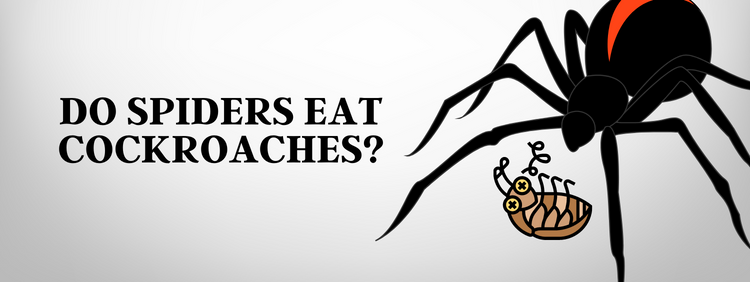Waterloo Pest Control: Do Spiders Eat Cockroaches?

As a Waterloo homeowner, insect control in and around your property is probably a concern. Many insects can cause damage to your home, invade stored food and even carry diseases. Few species of insect are as invasive as cockroaches, and when they make their way into your home, spiders may follow. At Truly Nolen, we can assist you with spider control in Waterloo and offer you a few tips about the spiders you may see in your home and why roaches might attract them.
1. Wolf Spiders
You may ask yourself, “Do spiders eat cockroaches? Do all species include them in their diets?” Most do, and wolf spiders are no exception. These spiders are some of the largest in North America, and many people mistake them for tarantulas. However, wolf spiders have a larger range and can travel considerable distances in pursuit of their prey, including cockroaches. Unlike other spider species, wolf spiders do not spin webs to capture insects but use ambush techniques instead, stalking or leaping onto their prey. You can identify wolf spiders by their hairy abdomens and eight eyes, which create three separate rows.
Wolf spiders may enter your home in pursuit of cockroaches and their eggs, as they eat both. While this may seem beneficial, wolf spiders can cause their own problems once they decide to move in with you. They may create egg sacs in attics, basements and storage spaces and will defend them aggressively. These large spiders can deliver a painful bite, so calling us for residential pest control services is a safe and effective way to rid your home of these arachnids.
2. Jumping Spiders
As small and agile predators, jumping spiders use their silk as a dragline to build shelters for themselves and their eggs sacs but do not build typical webs. Instead, like wolf spiders, they stalk and ambush their prey. Most species of jumping spiders are not nearly as large and may hunt and kill small roaches. Some might catch roaches several times their size by immobilizing them with their venom. You can identify jumping spiders by their size, movement and four pairs of eyes. Unlike some other species, jumping spiders have excellent vision.
True to their name, jumping spiders can cross considerable distances with one jump. Their venom is not dangerous to people or your pets, but when they start large families inside your home, they can become a nuisance. You may find them hiding in storage areas and other places inside your home where roaches might lurk.
3. Widow Spiders
Few spiders have a reputation for a dangerous bite like the black widow. The female of the species has the most potent venom, which can cause nausea, vomiting and swelling at the site of the bite. Unlike ambush hunters, black widows build webs and their webbing is thicker, like cotton, which may help you identify them. The female black widow is glossy black with red markings on its underside, typically in the shape of an hourglass.
You may wonder if black widow spiders include roaches in their diet. This is a common question that our insect removal technicians often hear because of this spider’s reputation as a fierce predator, and they do indeed catch roaches in their webs. They may even catch and consume large roaches, as their sticky webs and potent venom allow them to take on prey larger than they are.
Call Us for Insect Control
Ridding your home of roaches can discourage the presence of spiders, and our technicians can inspect and treat your home to eliminate these bugs where they hide and prevent them from entering your home by sealing cracks and crevices. Storing food and sweeping or vacuuming food prep areas at least a few times a week can prevent roaches from seeking out crumbs and food scraps.
Because roaches usually attract spiders, your home can quickly become a haven for both. Contact us at Truly Nolen today and schedule an inspection for effective insect and spider control.